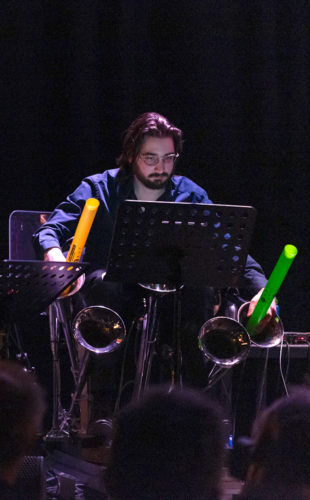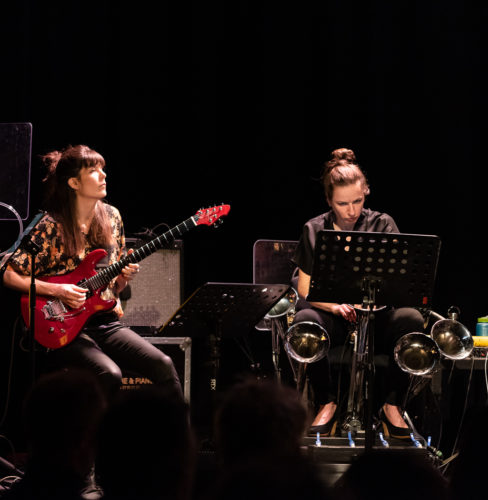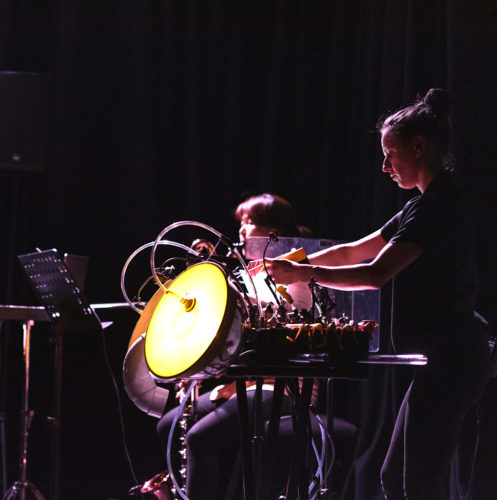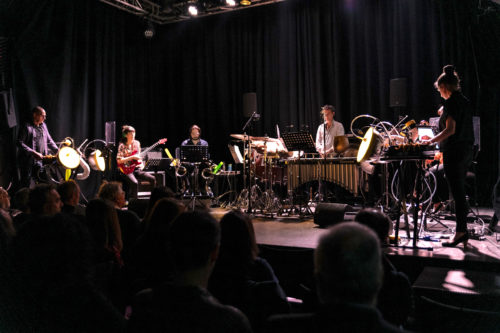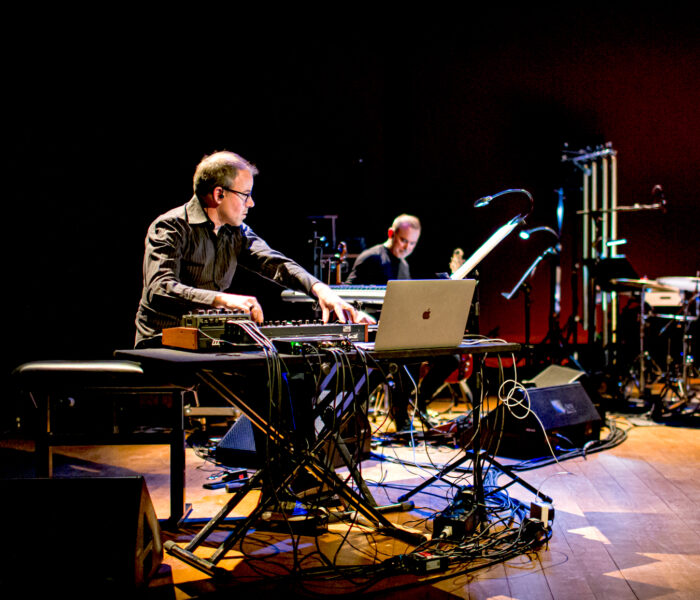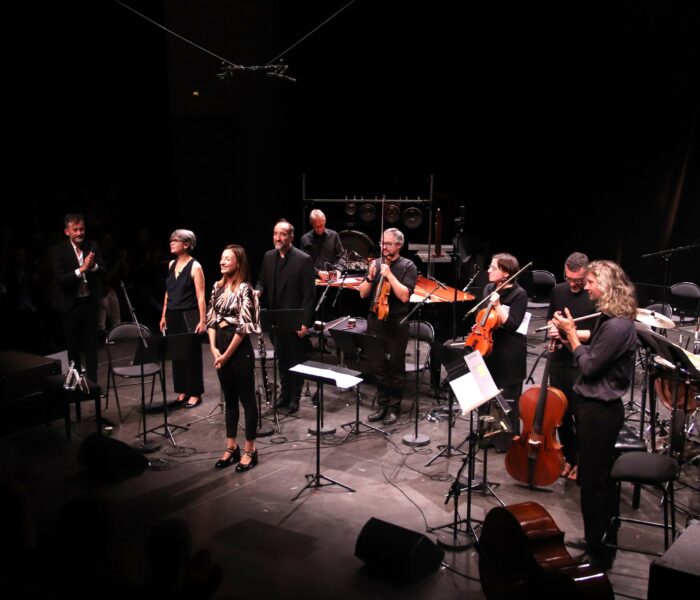Inventing, playing, listening: these are the three actions that animate the spirit of the Biennale des Musiques Exploratoires(BIME) led by its two artistic directors Anouck Avisse and Sebastian Rivas. The fruitful encounter at the Périscope between Jérôme Combier's Cairn ensemble and Jean-François Laporte's Totem Contemporain is a good example.
Inventing: this is what Canadian Jean-François Laporte has been doing since 1998, when his first instruments were created: they are acoustic (wind instruments using compressed air, living membranes, oscillators, aerophones, etc.) "created and elaborated with care thanks to our love and passion for raw materials and sound materials," says this passionate inventor. "Latex as a vibrating material had never been used in music before," he says. Three instruments were chosen for the concert: two Babel tables (a colourful multi-instrument consisting of two membrane bowls, a pipe, eight "insects", several vibrating membranes and a free latex electron), a real compressed air orchestra placed in the front and back (on either side of the stage); in between, the siren organ, which also uses pulsed compressed air in "heavy truck sirens", is reminiscent of the Italian Futurists' noise machines!
Totem_Instrument_Teaser from Totem Contemporain on Vimeo.
Playing: driven by a policy of creation, a hundred or so works have already been conceived for Totem Contemporain; but this is undoubtedly the first time that its members have met the musicians of the Cairn ensemble, even if the collaboration between Jean-François Laporte and Jérôme Combier is not new. Three instrumentalists, Christelle Séry (electric guitar), Ayumi Mori (Bb clarinet and bass clarinet) and Sylvain Lemètre (percussion) take up the challenge alongside the Canadian musicians of Totem (Jean-François Laporte, Francis Leduc and Émilie Girard-Charest) in this co-production, in which each of the partners has commissioned two composers of their choice.
Listening: on the one hand, the regulated instruments of classical lutherie that respond as precisely as possible to the codes of writing; on the other, instruments that are essentially fragile, even unpredictable, that raise the question of notation and whose improbable materials (latex, in particular) can easily be altered during use and modify the perspectives of listening: these are all starting points that are integrated into the project of each of the composers heard this evening
Sweden's Jesper Nordin is familiar with Totem Contemporain, for which he has already written. In his explicitly titled 15-minute piece, Close Encounter of the Second Kind , Cairn 's instruments emerge from the dark flow of Totem, vibraphone's ginned-up notes, electric guitar's effluvia and clarinet's trembling line in a beautifully coloured floating texture. A sonic blast in the middle of the work - pedals allow for this kind of impulse - opens the floodgates of (compressed) air and sound (the organ of sirens) before the energy subsides and the calm returns to the beginning.
The stridulations of the 'insects' and a dense flow surrounded by the low tones of the siren organ dominate the beginning of Seeing in the Secret by the British composer Michael Edwards, who is present in the hall. The piece, which incorporates a portion of fixed sounds, suffers from an excess of information within a somewhat confused dramaturgy in which the instrumental writing struggles to integrate.
Canadian composer Émilie Girard-Charest has a completely different approach, playing her own piece on one of the tables at Babel alongside the five other musicians. Beginning dal niente, Limaille invites us to listen sharply, in the in-between of sound and the slow evolution of the spectrum up to its noisy deployment: beats, differential sounds, breath hazards, vibratory phenomena and resulting sounds are heard under the common action of the Totem's instruments, highlighted in their singularity, and Cairn's. Limaille is a tense meditation that opens up unexpected sound perspectives.
Each new piece requires a re-tuning of the Totem. Samuel Sighicelli's title Impetus Machine Overflow Rush Fallout, which is difficult to translate, says a lot about the energy of the gesture and the dazzle of the play that is exerted in the composition: "You make this instrument your own quite quickly", he confided to Guillaume Kosmicki, who is in charge of the biennial's brochure; "It is not difficult to access, but mastering the detail is more difficult, of course", he added. In this proximity to jazz and its singular phrasing, Sighicelli explores the Totem in a rhythmic dimension and articulates in a virtuoso manner the two sound sources: vitality of the colours and plasticity of the sound with the activity of the latex and that of the electric guitar engaging the effects of seven pedals! The chiselling of the contours and the work of amplification and spatialization give real relief to the instruments of the Totem alongside the instrumental writing and its melodic perspectives. The pulsating and often repetitive sequences alternate with smooth and long tracks, less written and more performative, leaving the timbre and breath of the siren organ time to unfold freely: the friction of the two "sonic skins" is as physical as it is enjoyable, remarkably performed by our six musicians in perfect osmosis.
Michèle Tosi



)

